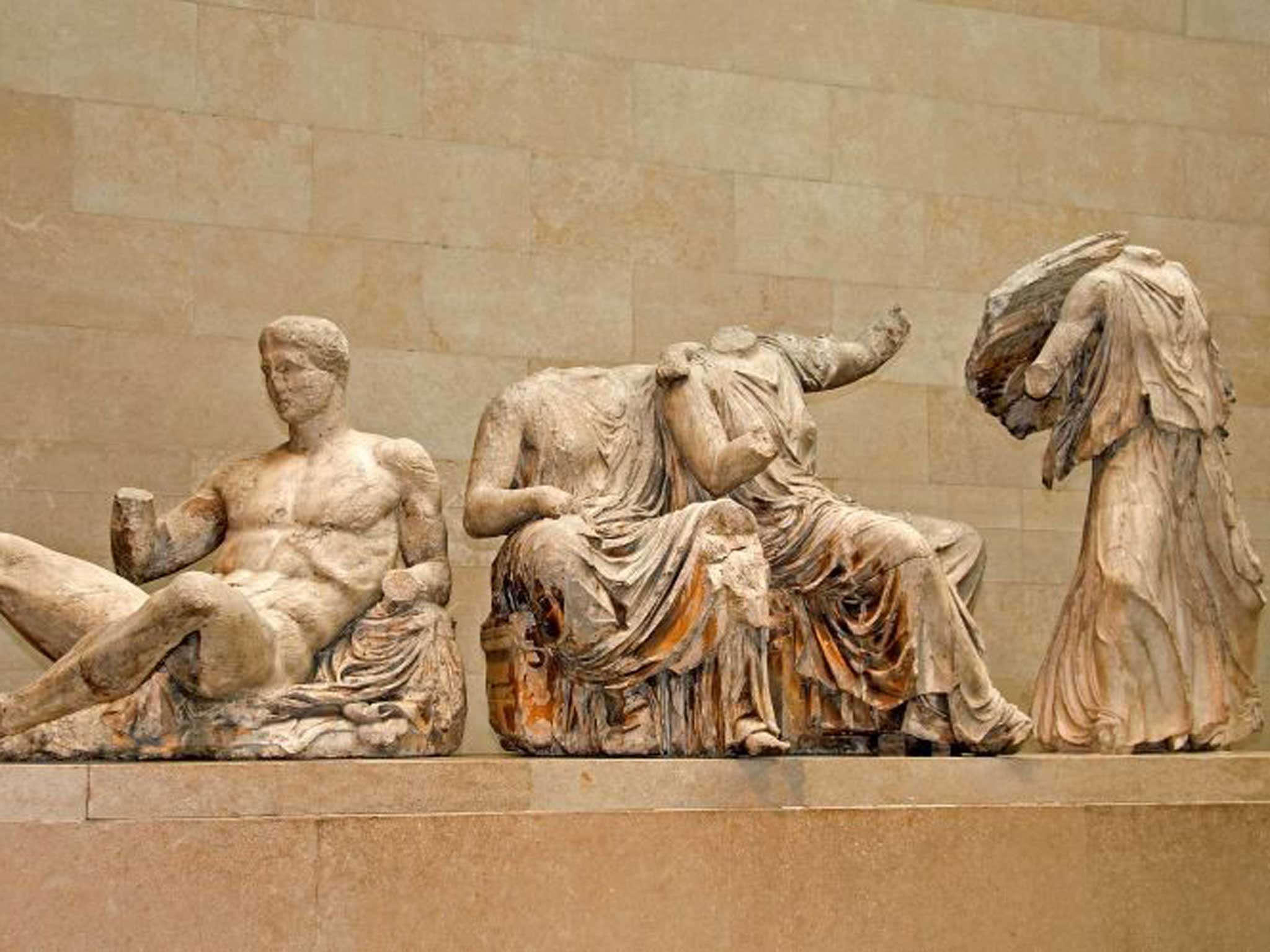The Independent's journalism is supported by our readers. When you purchase through links on our site, we may earn commission.
The Elgin Marbles: Could returning them be the thin end of the repatriation wedge?
Returning ancient art to its homeland would certainly set a risky precedent

Your support helps us to tell the story
From reproductive rights to climate change to Big Tech, The Independent is on the ground when the story is developing. Whether it's investigating the financials of Elon Musk's pro-Trump PAC or producing our latest documentary, 'The A Word', which shines a light on the American women fighting for reproductive rights, we know how important it is to parse out the facts from the messaging.
At such a critical moment in US history, we need reporters on the ground. Your donation allows us to keep sending journalists to speak to both sides of the story.
The Independent is trusted by Americans across the entire political spectrum. And unlike many other quality news outlets, we choose not to lock Americans out of our reporting and analysis with paywalls. We believe quality journalism should be available to everyone, paid for by those who can afford it.
Your support makes all the difference.If there is a question which keeps museum directors awake at night, it must be this: should the Elgin Marbles go back to Greece? It’s one to which there isn’t – for me – an easy answer, even when Amal Alamuddin Clooney adds her considerable legal heft to the Greek side.
Of course, the marbles were taken from Athens in rather dubious circumstances. The British Museum may have acquired them in good faith, but they came from a man who was undeniably a bit of a chancer.
Was Lord Elgin a patriotic Indiana-Jones-type – rescuing priceless sculptures from a ravaged city because he believed they belonged in a museum? Or was he a profiteer, swiping treasures from Athens to adorn his own planned mini-Parthenon in Fife? Perhaps Broomhall House – the Elgin family seat – rather than Edinburgh, would have been known as the Athens of the North.
Certainly, he sold the marbles to the government for less than it cost to bring them to Britain. But did he do it because of an altruistic desire to endow them to the nation? Or did he just run out of money when his wealthy wife left him, and have to sell up at a loss?
The Parthenon Frieze was controversial from the start. There’s a cartoon from 1816 by George Cruikshank, titled “The Elgin Marbles! Or John Bull buying stones at the time his numerous family want bread”. Starving children grab at John Bull’s coat, wailing: “Don’t buy them, Daddy! We don’t want Stones. Give us Bread!” It’s an eloquent early draft of the “Why should the nation buy art when the money could be used to build hospitals?” argument.
Whatever the rights and wrongs of its acquisition, half of the Parthenon Frieze is ensconced in the British Museum, which (after an early vigorous-cleaning mishap) has been a wonderful guardian.
The museum is free to enter, and the frieze has a spectacular gallery of its own. Other stand-out pieces of Greek sculpture can be found nearby, so no one could argue that the marbles look out of place. And for those of us who live in London, they are a constant source of delight: I probably visit them five times a year at least, something I would struggle to do if they went to Athens.
And would the marbles be the thin end of a repatriation wedge? I love visiting the Metropolitan Museum of Art, in New York. And that means I can see the wall-paintings of the imperial villa at Boscotrecase, including the bedroom of Augustus’s hapless grandson, Agrippa Postumus. Unlike the Parthenon Frieze, these frescos are neither world-famous nor controversial. They’re a minor attraction at the Met, in a side-room, probably missed by visitors heading to see the Jackson Pollocks and the Tiffany glass.
But they are impossibly beautiful and, on a somewhat smaller scale, historically significant. I’ve been reading about Agrippa Postumus since I was an A-level student, and – call me a crybaby if you must – the first time I saw his room, I almost wept. The incongruity of seeing these pieces in a room next to Central Park occurred to me only briefly.
Would the frescos be more appropriately displayed in Boscotrecase, near Naples? Or would they be adorning some Mafioso’s villa by now? It would certainly be cheaper for me to go and see them in Italy. But somehow, they fit in New York. They’re beautifully displayed and it would be a pity if the Met’s many visitors were deprived of the chance to see them.
When Italy and Greece have been undergoing political and economic difficulties, it seems important to have at least some of their ancient art dotted around the world. It serves – more than an ambassador ever could – to remind us what these countries have given to us all: their unrivalled role in our collective histories. But then again you only have to look at them to see why Athens wants her marbles back.
Join our commenting forum
Join thought-provoking conversations, follow other Independent readers and see their replies
Comments